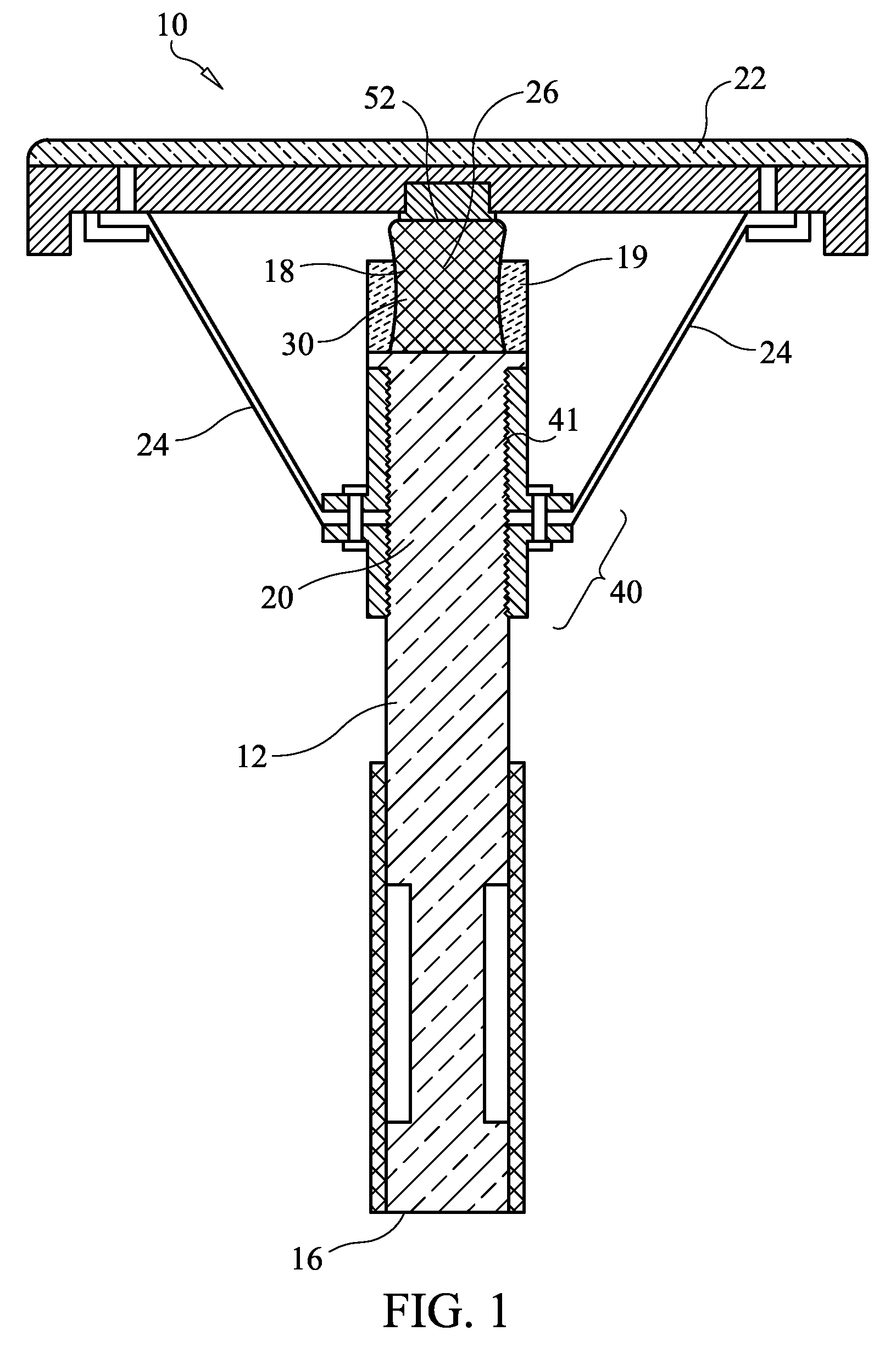Balance chair
a balance chair and chair body technology, applied in the field of chairs, can solve the problems of excessive or premature wear of the chair, and achieve the effects of less abrupt pivoting, less abrupt leaning, and preventing the user from excessive leaning or falling sideways
- Summary
- Abstract
- Description
- Claims
- Application Information
AI Technical Summary
Benefits of technology
Problems solved by technology
Method used
Image
Examples
Embodiment Construction
[0038]Embodiments of the present invention and their technical advantages may be better understood by referring to FIGS. 1-7D.
[0039]Referring now to FIGS. 1-3, a balance chair 10 includes a central vertical post 12 with a base 14 attached at a lower end 16 of the central post 12; a flexible joint 18 attached at an upper end 20 of the central post 12; a seat 22 attached atop the flexible joint 18; and a plurality of resistance members 24 attached to the central post 12 and the seat 22, wherein the plurality of resistance members 24 are arranged around the central post 12 in a spaced-apart manner, wherein the flexible joint 18 supports the seat 22 and enables the seat 22 to pivot about an effective pivot point 26 defined by the flexible joint 18, and wherein the resistance members 24 resist but do not prevent pivoting of the seat 22 about the effective pivot point 26. The flexible joint 18 and the resistance members 24 co-act to support pivoting of the seat 22 both side-to-side and fo...
PUM
 Login to View More
Login to View More Abstract
Description
Claims
Application Information
 Login to View More
Login to View More - R&D
- Intellectual Property
- Life Sciences
- Materials
- Tech Scout
- Unparalleled Data Quality
- Higher Quality Content
- 60% Fewer Hallucinations
Browse by: Latest US Patents, China's latest patents, Technical Efficacy Thesaurus, Application Domain, Technology Topic, Popular Technical Reports.
© 2025 PatSnap. All rights reserved.Legal|Privacy policy|Modern Slavery Act Transparency Statement|Sitemap|About US| Contact US: help@patsnap.com



